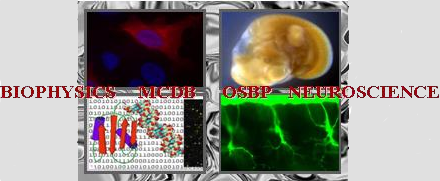Talk abstracts
Talk on Wednesday 09:00-09:15am submitted by Joshua Johnson
Dynamic Control of DNA Origami Nanostructures Via Gold Nanoparticles
Joshua Johnson (Biophysics Program), Abhilasha Dehankar (Department of Chemical and Biochemical Engineering), Jessica Winter (Department of Chemical and Biochemical Engineering and Department of BIomedical Engineering), Carlos Castro (Departments of Mechanical and Aerospace Engineering)
Abstract:
A major direction of research in DNA origami is the folding of DNA into complex 3D shapes with the inclusion of flexible regions to form dynamic nanomachines that approximate macroscale machine elements. These types of dynamic nanostructures are typically actuated via the addition DNA “fuel” strands that form new connections to reconfigure a structure, or via the selective removal of DNA components via strand displacement. Previous work has shown that DNA origami mechanisms can be actuated on relatively slow time scales usually requiring several minutes to several hours to transition between states. The goal of this work is to enable novel actuation methods with distinct, and potentially faster, triggering mechanisms based on incorporating other nanomaterial components. While DNA origami has been used in combination with other nanomaterials such as gold nanoparticles there has yet to be a demonstration of nanoparticles used for the precise control of nanostructure actuation. Using a DNA origami hinge mechanism we have included single-stranded DNA overhangs extending from the arms, which bind to a DNA-conjugated gold nanoparticle to latch the hinge closed. By varying where the nanoparticle is incorporated (distance from the hinge vertex) and the nanoparticle size we have shown that not only the average angles but also the angular distributions of the hinge are highly controllable as verified by transmission electron microscopy. In addition, tuning the nanoparticle binding affinity of the bottom arm relative to the top arm allows for actuation of the hinge via DNA melting without releasing the nanoparticle entirely, thereby enabling rapid and reversible temperature-based actuation. Particle binding and hinge actuation were monitored via a two color fluorescence quenching setup to reveal that the kinetics of actuation occur on the seconds timescale and is ultimately limited by heat diffusion into the sample volume. Actuating the hinge over several cycles shows no significant loss of function demonstrating that the nanoparticle hinge assembly is a robust tool for nanoscale manipulation. Future work will explore light-based actuation mediated by local plasmonic heating of the nanoparticles in both bulk fluorescence and single molecule experiments.
References:
1) Castro, Carlos Ernesto, et al. "A primer to scaffolded DNA origami." Nature methods 8.3 (2011): 221-229.
2) Castro, Carlos E., et al. "Mechanical design of DNA nanostructures."Nanoscale 7.14 (2015): 5913-5921.
3) Marras, Alexander E., et al. "Programmable motion of DNA origami mechanisms." Proceedings of the National Academy of Sciences 112.3 (2015): 713-718.
4) Gerling, Thomas, et al. "Dynamic DNA devices and assemblies formed by shape-complementary, non–base pairing 3D components." Science 347.6229 (2015): 1446-1452.
Keywords: DNA origami, nanotechnology, nanoparticles
